Fine laser cutting is a process that’s well suited to the specialized cutting requirements found in the manufacturing of medical tube tools and components.
The laser is perfect for making sharp edges, contours, and patterns within edges found in tools and devices in the medical field.
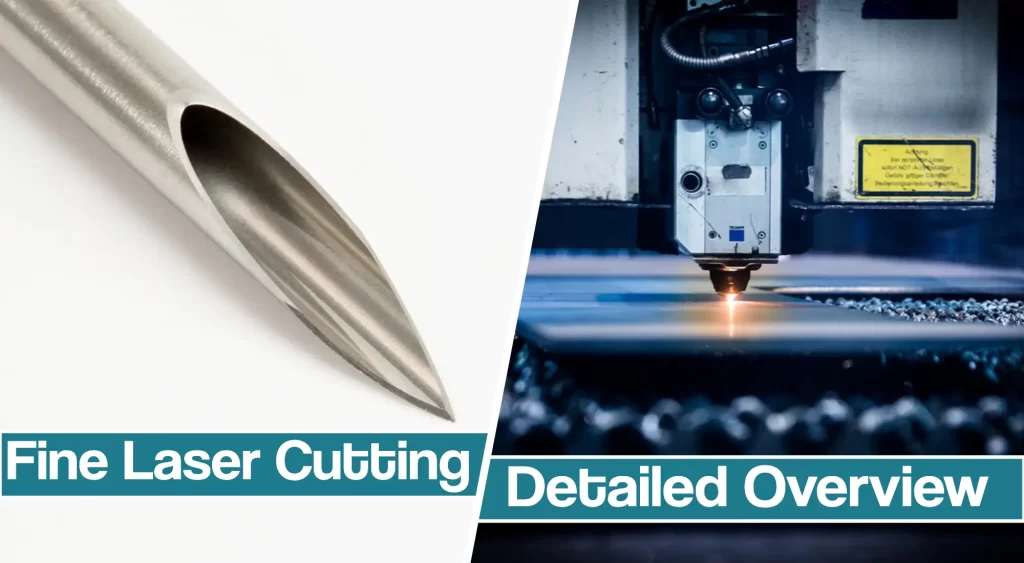
The fine laser cutting process requires the motion, laser, software, and tools to work together.
What Is Fine Laser Cutting?
You’ve heard of laser cutting, but what is this “fine” laser cutting we speak of? Is it the same as regular laser cutting?
Fine laser cutting refers to laser cutting of metals that are less than 0.04” (1.0mm) thick. Sometimes the metals are as thin as 0.0005”-0.002” (10-50 microns). This cutting process is usually used to cut aluminum, stainless steel, titanium, nitinol, nickel, MP35N (cobalt-chrome steel alloy), and copper.
Fine Laser Cutting Applications
From surgical instruments used in cutting and biopsy to needles containing unusual tips and sidewall openings, to puzzle chain linkages for flexible endoscopes, laser cutting provides higher precision, quality, and speed than traditionally used cutting techniques.
Additionally, new laser technologies are continuously developed and appear on the market. Often, such technologies are designed for a specific application, but then, they find use in more broad fields.
Production of Medical Tools
The fine laser cutting is frequently used to make medical tubes and components using a fiber laser cutter with a gas assist.
The laser is “assisted” with a coaxial gas, usually oxygen (O2) is applied. While oxygen works the best, sometimes, regular shop air is used after oil filtering, usually when the tube thickness is less than .0001-inch or when the needed cut quality is not very high.
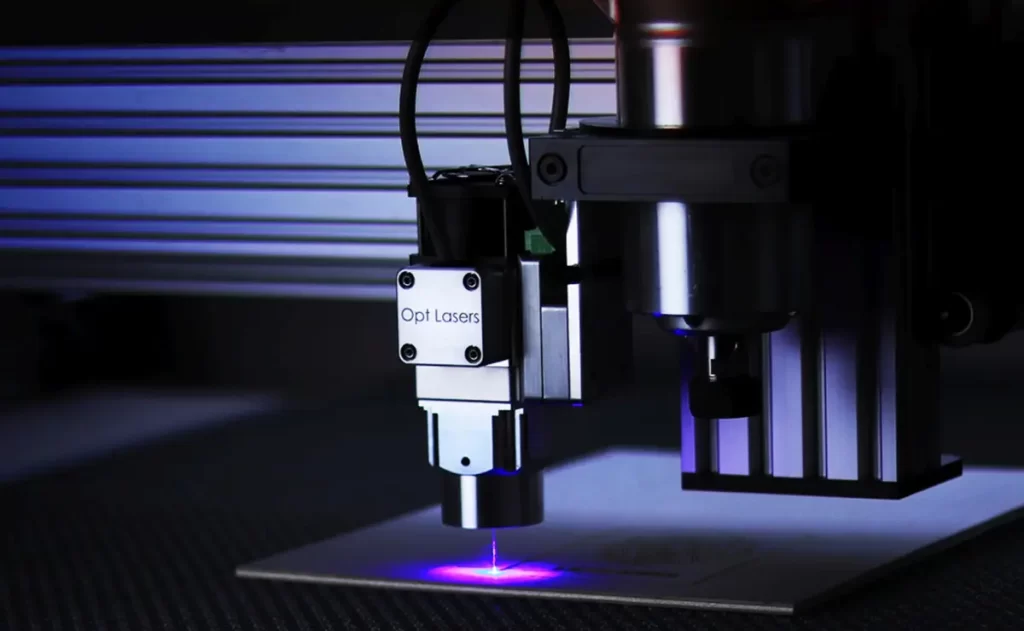
Fine laser cutting is applied to cut stainless steel (300 and 400 series, 17-4, 17-7), MP35N (cobalt-chrome steel alloy), and Nitinol (nickel-titanium alloy.) This cutting method can be used for on-axis (90º to the surface) and off-axis (angled to the surface) cutting.
A highly focused laser melts a thin sliver of metal, and the 0.02-inch diameter gas jet nozzle that is coaxial with the laser blows away the molten material.
This continual cycle of melting and ejection produces the desired cut quality and features. The distance between the laser and the material needs to be maintained precisely.
The oxygen gas serves two purposes: it blows away the molten metal and improves heat input because the heated material reacts with oxygen and heats up.
The heat input is increased by about 30 to 50 percent in the cutting area thanks to oxygen presence. So, the gas assist feature is crucial to improve cut speed and quality.
Laser cutting with the assisting gas provides the highest cut quality and high-resolution cut paths, which is a high priority for medical tube tools and component makers. The key element of evaluating laser cutting quality is the dimensional accuracy. The cut part must match the print. Additionally, surface roughness (better than 12 micro inches) and the absence of thermal damage and important characteristics your fiber laser cutter needs to exhibit.
Fine laser cutting can achieve dimensional accuracy at about 0.0005-inch. and cut width can be extremely small with, less than 0.001-inch. Such accuracy benefits the production of the jagged teeth used in some cutting tools.
There is almost no or very little dross or burr left on the underside of the cut. So, the required post-cutting processing is minimized. The small amount of material that doesn’t get blown away during the process is less than 0.0005-inch.
Benefits of Fine Laser Cutting
Laser cutting is ideal for working on small tubes that must be cut to high dimensional accuracy because the laser light does not have any physical presence and doesn’t make contact with the cut material. Therefore, the laser doesn’t push, drag, or exert a force that can bend a part or cause flex that would harm process control.
Additionally, fine laser cutting creates minimal thermal input, and offers fine control over the heat generated in the work area. Small metal parts heat up rapidly and might overheat or deform, so the laser’s heat control is a very welcome feature.
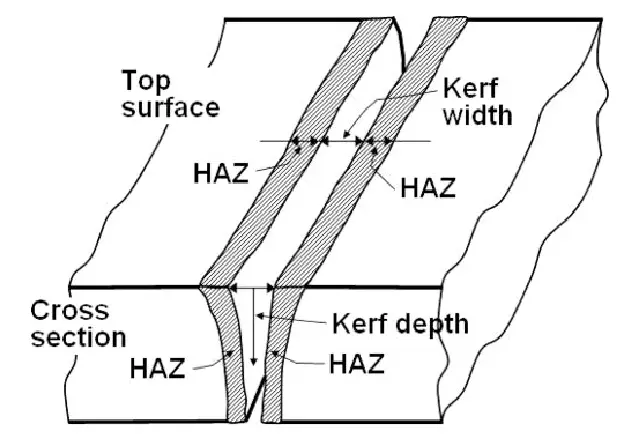
You can achieve exceptional focus with fine laser cutters — up to about 25 microns (about 25% of the width of human hair.) So, lasers are a great choice when cutting something that requires removing a minimal amount of material to and extremely high precision/accuracy.
The laser cutting technology controls pulse width, power, and focus spot size. Because the laser-cutting tool does not rely on touching the cut material, you can orient it to make any shape or form. Since it’s not limited by physical cutting geometry, the laser cutting process can be used to create unique shapes.
Fine Laser Cutting vs. Competing Technologies
Fine Laser Cutting vs. Electro Discharge Machining (EDM)
Laser cutting’s speed and precision compare favorably with the primary competing technology, electro discharge machining (EDM). To obtain the same, high-quality cut as a laser-cutting machine, EDM requires up to four passes, and this increases processing time considerably. However, the EDM does allow multiple parts to be processed simultaneously, unlike laser cutters.
The width of cuts produced by EDM cutting is around 0.004-inch, while laser cutter may be as small as 0.001-inch. Feature sizes are limited with EDM, and sharpness is not as accirate, so the final cut is compromised.
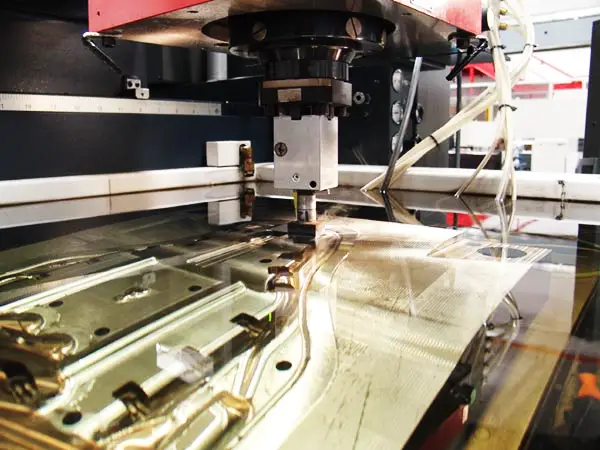
The EDM process works best with specific geometries, limiting its applications. For example, tubes with a symmetrical profile. Problems may develop if there is a hole in a pipe that does not go through both sides.
The process is analogous to a cheese cutter that uses a wire to slice through a block of cheese. Everything works fine when cutting a symmetrical, solid shape, but the it cannot handle complex geometries, unlike laser cutters.
Additionally, EDM machines require large floor space, which can get expensive. This is especially true for fabricating shops and factories. A typical EDM machine can be as large as 10 to 12 square feet, while a laser cutting system is 5 to 6 square feet.
Laser vs. Electro Chemical Grinding (ECM)
Electrochemical grinding (ECM) removes electrically conductive material by grinding with a negatively charged abrasive grinding wheel, an electrolyte fluid, and a positively charged workpiece.
ECM is a fast-cutting method that gets quality similar to EDM. With ECM, the electrolyte used must be disposed of as a hazardous waste per federal Occupational Health and Safety Administration regulations, and some of the electrolytes produce fumes of hexavalent chromium (Cr(VI) when cutting steels.
Finally, hard tooling makes ECM much less flexible than laser cutting.
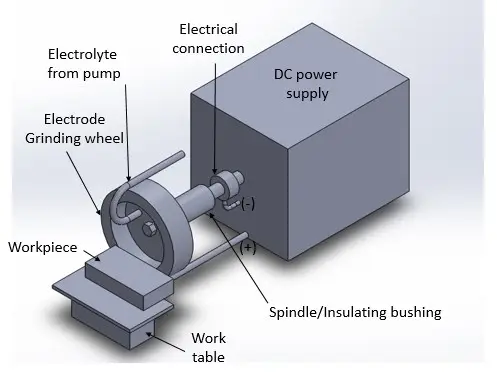
Laser vs. Waterjet Cutting
Water jet cutting slices into metal using a high-velocity and high-pressure water jet, or a mixture of water and an abrasive substance. But, water jet cutters are much more expensive than laser cutters and don’t provide many benefits over it.
Water jet cutting also restricts the cut geometry. Only symmetrical through-features or end cuts are possible using the water jet. Here, you can read more about how laser fares against waterjet and plasma cutting.
Conclusion
Fine laser cutting is one of the best metal cutting technologies employed in producing medical equipment and other parts that require high precision.
However, to utilize all of the fine laser cutting benefits, the cutting systems needs to be adequately designed and employed. This is a very delicate process, so hiring an expert from this field is a must if you wish to use a fiber laser to perform fine laser cuts.





